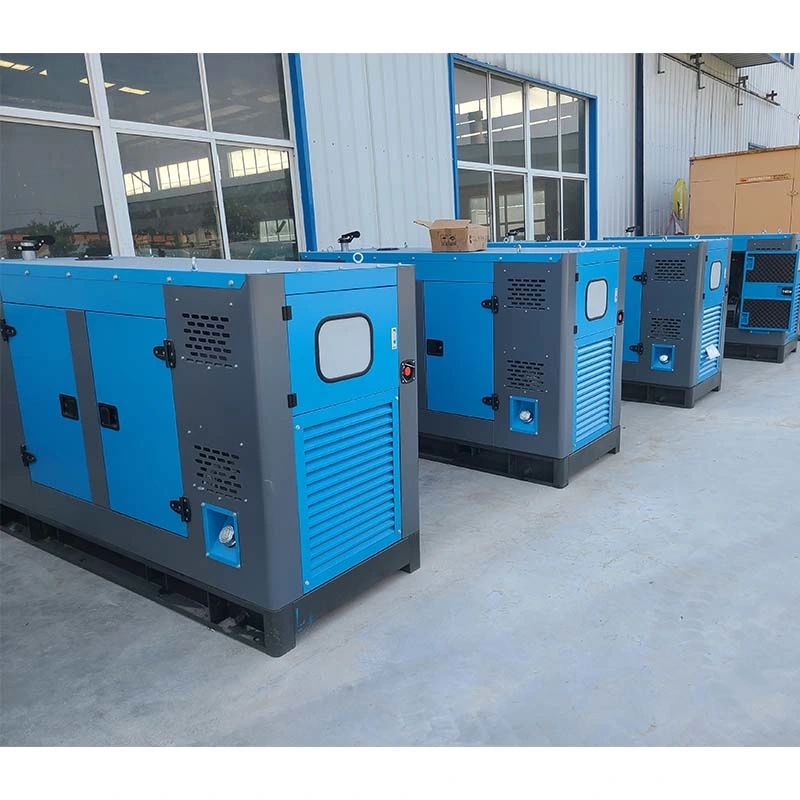Diesel Generator for Factory Inspection Ensuring Uninterrupted Power Supply in Manufacturing Facilities

Introduction:
In today's industrial landscape, manufacturing facilities heavily rely on a constant and reliable power supply to maintain their operations. Any interruption in power can lead to substantial financial losses, productivity decline, and potential damage to equipment. To mitigate such risks, many factories opt to install diesel generators as a backup power source. In this article, we will explore the importance of diesel generators for factory inspection and delve into the key factors to consider when selecting, maintaining, and inspecting these vital power systems.
1. The Role of Diesel Generators in Factory Operations:
1.1 Backup Power Supply:
A diesel generator serves as a backup power source for manufacturing facilities, ensuring uninterrupted operations during power outages or scheduled maintenance of the main power grid. These generators act as a reliable and immediate source of electricity, allowing factories to continue production without significant disruptions or downtime.
1.2 Load Balancing:
Diesel generators also play a crucial role in load balancing within a factory. By providing additional power during peak usage periods, they prevent overloading on the main grid and ensure a consistent power supply to critical production equipment.
2. Factors to Consider When Selecting a Diesel Generator:
2.1 Power Requirements:
Determining the power requirements of a manufacturing facility is essential when selecting an appropriate diesel generator. Conducting a thorough assessment of the factory's electrical load and power demands helps determine the generator's capacity, ensuring it can meet the facility's energy needs during an outage.
2.2 Fuel Efficiency:
Fuel efficiency is a critical factor to consider when choosing a diesel generator for factory operations. Opting for a generator with high fuel efficiency helps reduce operational costs and ensures longer durations of uninterrupted power supply without frequently refueling.
2.3 Emission Standards:

Environmental concerns are increasingly important in today's industrial landscape. Selecting a diesel generator that complies with emission standards not only helps reduce the facility's carbon footprint but also ensures compliance with local regulations and avoids penalties.
2.4 Noise Levels:
Factories often have noise regulations in place to maintain a safe and productive working environment. Selecting a diesel generator with low noise emissions helps prevent noise pollution within the factory premises and ensures a conducive working atmosphere for employees.
3. Inspection and Maintenance of Diesel Generators:
3.1 Regular Inspections:
Regular inspections are crucial to identify any potential issues or maintenance requirements of diesel generators in factories. These inspections should include checks on fuel levels, coolant levels, oil levels, battery condition, and overall generator performance.
3.2 Scheduled Maintenance:
Following the manufacturer's recommended maintenance schedule is essential to keep diesel generators in optimal condition. Scheduled maintenance tasks may include oil and filter changes, fuel filter replacement, coolant system checks, and load bank testing.
3.3 Fuel Quality:
Ensuring the quality and cleanliness of the fuel supply is vital for the reliable operation of diesel generators. Regular fuel testing and filtration should be conducted to prevent fuel contamination, which can lead to generator malfunctions or engine damage.
3.4 Battery Health:
Diesel generators rely on batteries for starting and control functions. Regular inspection and maintenance of batteries, including checking for corrosion, loose connections, and overall battery health, are necessary to ensure proper generator operation when needed.
3.5 Electrical Connections and Wiring:
Inspecting electrical connections and wiring is crucial to prevent potential electrical hazards and ensure the seamless functioning of the diesel generator. Loose connections, damaged wiring, or faulty electrical components can lead to generator failure or pose safety risks.
4. Importance of Load Bank Testing:
4.1 Purpose of Load Bank Testing:
Load bank testing is a critical aspect of diesel generator inspection and maintenance. 300kw diesel generator for remote drilling operations involves simulating the generator's full load capacity to ensure its performance under real-world conditions. Load bank testing helps identify potential issues, such as fuel system problems, cooling system inefficiencies, or faulty voltage regulation.
4.2 Frequency of Load Bank Testing:
The frequency of load bank testing may vary depending on factors such as generator size, usage patterns, and manufacturer recommendations. However, it is generally recommended to perform load bank testing at least once a year to ensure optimal generator performance and reliability.
4.3 Benefits of Load Bank Testing:
Load bank testing provides several benefits, including validating the generator's capacity, identifying potential malfunctions or weaknesses, preventing wet stacking (a condition that occurs when unburned fuel accumulates in the exhaust system), and extending the generator's lifespan by keeping it in optimal condition.
5. Conclusion:
Diesel generators play a vital role in ensuring uninterrupted power supply for manufacturing facilities. Proper selection, regular inspection, and maintenance are essential to guarantee their reliable operation during power outages or grid failures. By considering factors such as power requirements, fuel efficiency, emission standards, and noise levels, factory owners can choose the most suitable diesel generator for their operations. Additionally, conducting regular inspections, adhering to maintenance schedules, and performing load bank testing contribute to the longevity and efficient performance of these critical backup power systems. With diligent factory inspection and maintenance, diesel generators provide peace of mind, productivity, and resilience to manufacturing facilities across various industries.
